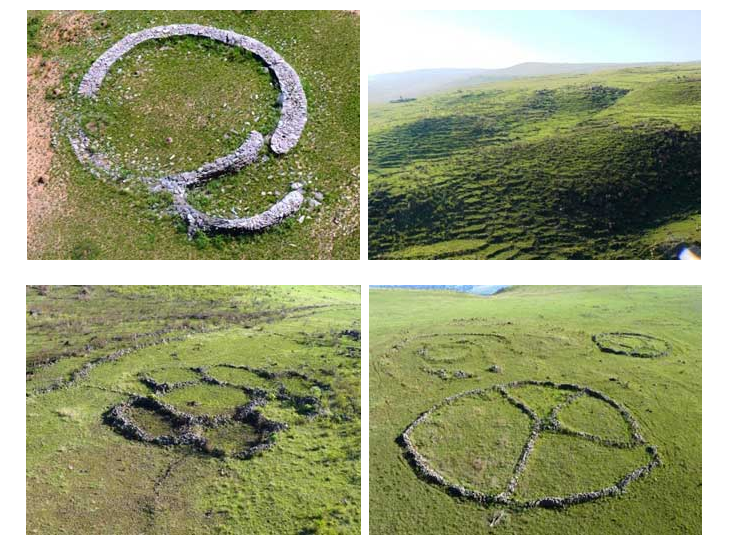Evidence of advanced ancient civilizations on Earth—over 100,000 years ago?

The idea that advanced ancient civilizations existed on Earth in the distant past has captured the interest of authors, historians, and archaeologists across the globe. Every once in a while, experts make discoveries that completely change everything we know about history. What if, in the distant past—as far as 100,000 years ago—Earth was inhabited by civilizations that were completely different from what we are today?
Do you believe that Intelligent civilizations lived on Earth over 100,000 years ago? Many controversial discoveries point to the possibility that hundreds of thousands of years ago, advanced civilizations roamed our planet. What do we really know about history and the past of the human race? Has mankind been on planet Earth only a couple of thousands of years as mainstream researchers suggest?
Or is it possible that advanced ancient civilizations inhabited our planet hundreds of thousands of years ago? Recently, several discoveries seem to point to that possibility.
Why mainstream researchers opted to ‘ignore’ details and clues which point towards the existence of civilizations that are much older than we previously believed is still an enigma for a lot of people. Evidence of civilizations that inhabited our planet ‘before recorded history’ can be found in all corners of the world. In Ancient Egypt, Mesoamerica and Sumeria we find written texts that speak of great civilizations, great rulers, and a ‘golden age’ that lasted for thousands of years.
Evidence of civilizations that inhabited our planet ‘before recorded history’ can be found in all corners of the world. In Ancient Egypt, Mesoamerica and Sumeria we find written texts that speak of great civilizations, great rulers, and a ‘golden age’ that lasted for thousands of years.
Let’s take a trip to Africa, there, we will find evidence of a major ancient settlement that predates our entire history.
Around 150 km west of port Maputo, we find the remains of a huge metropolis that measures, according to initial studies, around 1500 square kilometers. This ancient city is according to researchers, part of an even larger community with about 10,000 square kilometers, believed to have been constructed between 160,000 to 200,000 years before Christ.
The surrounding geology is interesting due to numerous gold mines located in the vicinity. Researchers have proposed that a missing civilization from the distant past, could have lived and proposed in that part of the world while mining gold.
Researchers point to the Ancient Anunnaki.
Is this another civilization that predates the Inca and their ancestors? No one could have imagined that somewhere, in the remote areas of the Amazon, a lost civilizations would be found.
Rapid deforestation in combination with Google Earth has allowed the detection of 210 geoglyphs in 200 different site sites, in a strip of 250 kilometers by 10 kilometers in the Amazon. Just like the Nazca lines, the incredible geometric, zoomorphic and anthropomorphic designs of the Amazon can only be truly appreciated from the air. The question remains, why?
The question remains, why?
Numerous remains of what is obviously part of an ancient and hitherto unknown civilization have appeared under the trees of the Amazonian rainforest. According to researchers, 260 huge avenues, long irrigation canals, and fences for livestock have been spotted from the air. The discovery was made in the vicinity of the border between Bolivia and Brazil.
In the tangled and dense jungles of the Amazon, there are numerous mysteries that could probably help us understand how ancient civilizations lived in the distant past.
Even thought that several researchers believe that the Pyramids of Paratoari are truncated ridge spurs, which can take the form of natural pyramids, there are many other researchers who firmly believe that these structures were built in the distant past by a civilization that completely been ignored by mainstream history
Excursions to the region found plenty of evidence of Incan inhabitance in the area, such as petroglyphs, paved roads, and platforms.
The mysterious pyramidal structures were first identified via NASA satellite photograph number C-S11-32W071-03, released in 1976. The images caused numerous researchers to venture to the Manu area of dense tropical rain forest in southeast Peru in hopes to find out whether these structures were actually built by an ancient civilization, lost in time.
The Sphinx, an 800,000-year-old monument?
One of the most mysterious and enigmatic monuments on the surface of the planet is without a doubt the Great Sphinx at the Giza plateau in Egypt. It is an ancient construction that has baffled researchers ever since its discovery and until today, no one has been able to accurately date the Sphinx, since there are no written records or mentions in the past about it. Now, two Ukrainian researchers have proposed a new provocative theory where the two scientists propose that the Great Sphinx of Egypt is around 800,000 years old. A Revolutionary theory that is backed up by science.
The study was presented at the International Conference of Geoarchaeology and Archaeomineralogy held in Sofia titled: GEOLOGICAL ASPECT OF THE PROBLEM OF DATING THE GREAT EGYPTIAN SPHINX CONSTRUCTION.
The authors of this paper are scientists Manichev Vjacheslav I. (Institute of Environmental Geochemistry of the National Academy of Sciences of Ukraine) and Alexander G. Parkhomenko (Institute of Geography of the National Academy of Sciences of Ukraine).
The starting point of these two experts is the paradigm shift initiated by West and Schoch, a ‘debate’ intended to overcome the orthodox view of Egyptology referring to the possible remote origins of the Egyptian civilization and, on the other, physical evidence of water erosion present at the monuments of the Giza Plateau.
The truth is that we have very little knowledge when it comes to the origins of live and modern civilization.
In a recently published study, experts concluded that DIFFERENT ‘Complex’ life forms may have once existed on Earth before our species came into existence.
“This research shows that there was enough oxygen in the environment to have allowed complex cells to have evolved…”
According to scientists, we are not the FIRST complex life forms on planet Earth. In fact, another complex life form existed once but disappeared at some point during Earth’s long history. Then, after a while, complex life forms reappeared.
Mainstream scholars agree that given our ‘current’ knowledge of Earth’s history, complex life appeared on our planet at least some 1.75 BILLION years ago.
So, if complex life could have existed on Earth in the distant past, why is it so improbable and unlikely that advanced civilizations flourished on Earth?
Curiously, according to Jason Wright, assistant professor of astrophysics and astronomy of the Pennsylvania State University ‘technological’ alien civilizations may have once lived on one of the planets in our solar system, and eventually disappeared without a trace.
In a study titled ‘Prior Indigenous Technological Species’, Professor Wright proposes that ancient aliens may have even lived on either Mars, Venus or Earth.
The scientific paper—which has been published in arXiv—states: A prior indigenous technological species might have arisen on ancient Earth or another body, such as a pre-greenhouse Venus or a wet Mars.
However, if these advanced alien civilizations existed in our solar system—perhaps even Earth—most evidence of their existence is probably gone by now.



 Creators of mankind
Creators of mankind Description of “Tall white aliens”
Description of “Tall white aliens” Where they came from?
Where they came from? About hostile civilizations
About hostile civilizations The war for the Earth
The war for the Earth “Tall white aliens” about eternal life
“Tall white aliens” about eternal life Video: “Nordic aliens”
Video: “Nordic aliens” Aliens
Aliens Alien encounters
Alien encounters The aliens base
The aliens base UFO
UFO Technology UFO
Technology UFO Underground civilization
Underground civilization Ancient alien artifacts
Ancient alien artifacts Military and UFO
Military and UFO Mysteries and hypotheses
Mysteries and hypotheses Scientific facts
Scientific facts


















